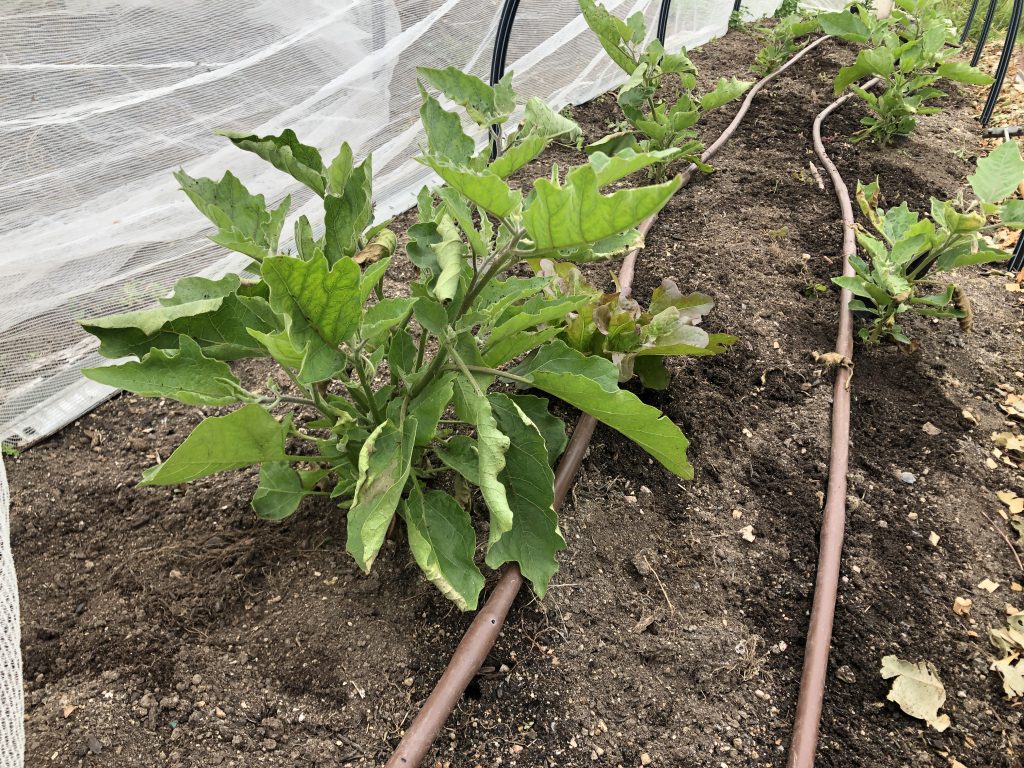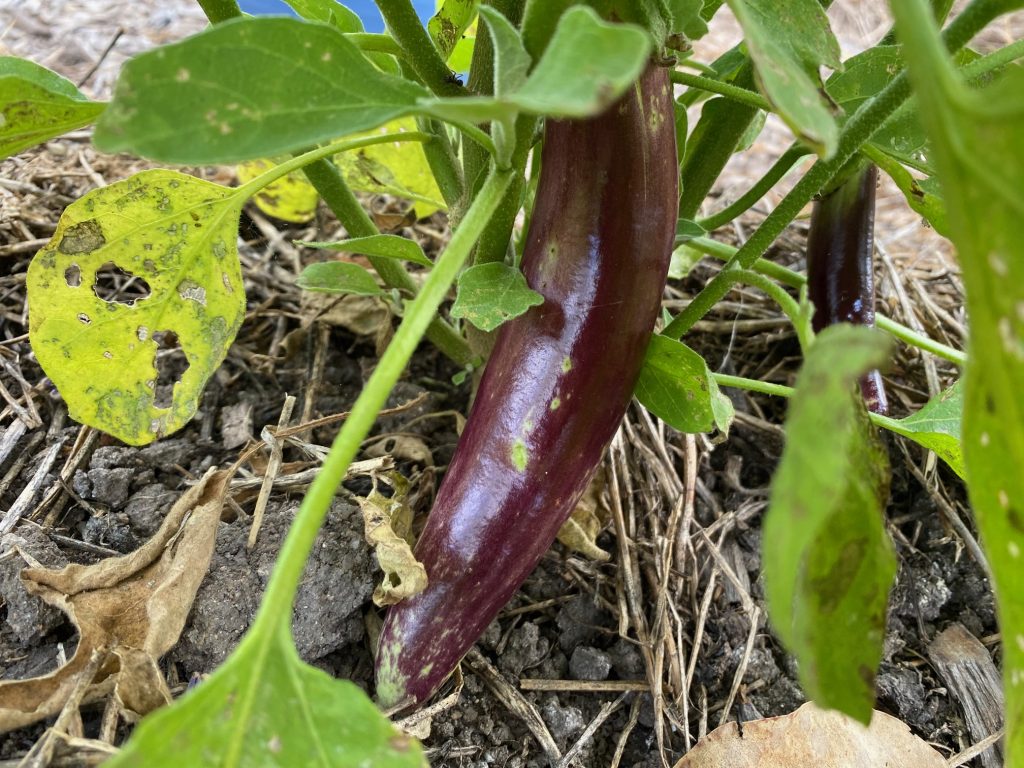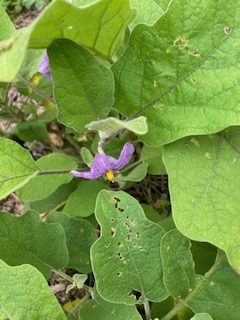Botanical name : Solanum melongena
Synonyms :
Common name : Eggplant, Aubergine
Intermediate difficulty for seed saving
Lifecycle: Tender perennial, usually grown as an annual in cooler climates
Pollination: Self and insect pollinated
Mating system: Perfect flowers
Suggested spacing: Same as for eating production
Seed specific requirements: none
Isolation distance: 30 metres to 250 metres
Population size: 5 to 10. Viable seed can be produced by a single plant.
Seed maturity: Seed is mature when the fruit is well past eating stage and skin colour changes to yellow or brown. The skin also loses it’s glossiness and becomes dull when the seeds are mature.
Processing method: Scrape seed from fruit. The flesh and seeds can also be blended in lots of water to break out the seeds.
Expected seed viability: 4 years
Images




Growing for seed
As eggplants can successfully self-pollinate it is possible to grow multiple varieties by using netting or caging to exclude pollinating insects. Individual blossoms can also be bagged to ensure they come true-to-type. Moderate distances such as 30 to 50 metres are usually enough to reduce the risk of cross pollination for most home situations.
Selection
Plant form as well as fruit size, shape and colour are the traits that should be selected for when seed saving.
Harvest
Seed is mature when the fruit is well past eating stage and skin changes colour to yellow or brown. The skin also loses its glossiness and becomes dull when the seeds are mature.
Fruits can be further ripened after harvest at room temperature and out of direct sunlight. Seeds will continue to mature during this holding period but care should be taken that the fruit do not start to rot.
Processing
After separating the seed from the flesh it should immediately be spread out to dry before it is stored.
Contributors
Liz Worth, Nellie Pryke
